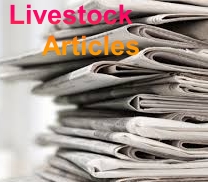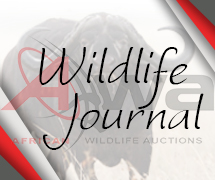Afrikaner Cattle Breeders Society of SA
The Afrikaner Cattle Breeders’ Society of South Africa was established in 1902, when cattle farmers became more appreciative of the breed’s unique qualities. The vision of the society was and still today is to promote and develop the Afrikaner into a sought after, easy care and widely adapted beef cattle breed.
The list of the Afrikaner Cattle Breeders' Society of South Africa founder members reads like a Who’s who of the early twentieth century, including prominent statesmen such as Louis Botha, Barry Hertzog, CF Beyers, Sir Thomas Smart, Sir Frederick Moore, HC Hull and Marthinus Theunis Steyn.
Breed standards of excellence and scale of points were determined during the inaugural meeting of the society, with Pierre Fouché of Leeudoringstad being appointed as the society’s first president and David van der Linde of Standerton as the first vice-president. JR Buhrman, Alex Hold, HWJ Ras and CJ van Zyl were some of the well-known breeders who first served on the society’s executive committee.
The breed almost grew extinct in the early twentieth century, when large numbers died of rinderpest or were destroyed during the Anglo Boer war. The situation was exacerbated when the breed lost favour and was primarily reserved for crossbreeding after many exotic breeds were imported from Britain and Europe to rebuild the country’s depleted cattle numbers.
The Afrikaner Cattle Breeders' Society of South Africa played a critical role in saving the breed from extinction and ensuring its future through ive breeding. Since 2010 the breed has enjoyed renewed interest because of its hardiness and ability to withstand the harsh climatic conditions associated with climate change.
Origin of Afrikaner Cattle
Afrikaner cattle are an indigenous breed with a hump. They seem to have originated from wild cattle, on the Asian steppes, that moved through Africa, from Egypt to the tropics and Sahara until finally arriving in South Africa.
The arduous journey resulted in an extremely hardy, no-nonsense breed, with the animals being well adapted to arid conditions, extreme heat, tropical diseases and internal and external parasites.
The Khoi people already farmed with these animals by the time Jan van Riebeeck reached the Cape in 1651, while Portuguese sailors back in the fifteenth century already reported sightings of the cattle in the south-western regions of the country.
The breed played a crucial role in the Great Trek, from 1834 onwards, with an estimated 200 000 Afrikaner and Afrikaner-type cattle forming part of the Voortrekker cattle herds and an additional 30 000 draught oxen being used to pull 3 000 ox wagons.
The Afrikaner Cattle Breeders’ Society has played an important role in steering the genetic development of these animals, resulting in what is known as the modern Afrikaner breed today: An extremely hardy breed, with the ability to produce exceptional meat with minimal inputs.
According to society, it is one of the only cattle breeds that can truly be produced in extensive veld conditions throughout the year. It also forms a partial foundation of various other breeds, such as the Bonsmara and Belmont Red breeds.
Pioneers of Afrikaner Cattle Breeders Society of South Africa
Alex Holm, the director of the Potchefstroom College of Agriculture at the time, is seen as a champion of the breed. In 1912, he formed a studbook to facilitate planned breeding and guide breeding decisions.
This had a major impact on the development of the modern Afrikaner cattle breed, as very few of the old-time breeders believed in the registering of cattle.
The first Afrikaner cattle were registered in 1907. These were two bulls and four females, belonging to WH and JR Buhrman from Ermelo, and four bulls and 47 females, belonging to the then Transvaal Department of Agriculture.
During the next five years, only 29 bulls and 113 females were registered, but in 1913, 263 animals were registered. Registration temporarily declined thereafter, when there was a shortage of official inspectors, but figures soared to about 860 animals registered every year after 1916.
Jozef du Plessis of the farm Rietfontein near Kroonstad, is seen as another pioneer. He implemented specific breeding strategies to improve his herd, starting with a small, breeding herd shortly after the second Anglo-Boer War.
He became renowned for his top class bulls, such as Weeskind, Makman, Kanon and Klein Jozef. Weeskind, for one, was sold for 1 500 pounds, which was a huge sum of money to pay for a bull in those times.
Membership of Afrikaner Cattle SA
Membership is open to Afrikaner stud-breeders. To join, stud breeders need to fill in a registration form and agree to comply with the rules and regulations of the Afrikaner Cattle Breeders' Society of South Africa.
Enrolment fees need to be paid before the application will be accepted. Annual Afrikaner Cattle Breeders' Society of South Africa membership is charged from then on, along with an additional amount based on the number of animals participating in the program.
All Afrikaner Cattle Breeders' Society of South Africa members are required to participate in performance testing to monitor the growth and performance of animals. New members have up to three years to start participation. Animals that do not comply with certain minimum standards have to be culled. They may not be used for reproductive purposes in the stud or be sold as a stud animal.
Reproduction values of all female animals need to be recorded and the Agricultural Research Centre in partnership with the Afrikaner Cattle Breeders Society will notify farmers of animals that do not comply with the minimum reproductive standards. Farmers then have three months to rectify the conditions, or else the animal will be deregistered as a stud animal. A heifer should calve before or at 42 months of age, with inter-calving periods not exceeding 790 days.
All animals need to be marked, according to the prescribed manner, to ease identification and recordkeeping.
Afrikaner Cattle
Afrikaner cattle have been labelled a "no-nonsense" breed.
Their horns are polled in commercial operations.
The Afrikaner is a medium to large cattle breed, usually with a deep red colour. They have long horns that turn upwards, although these are polled in commercial operations.
A mature bull weighs between 820 to 1090 kg, whereas a cow will weigh around 450 kg. The cattle do not have the compact block-like builds of many of the British breeds, but an oval build with strong legs, which allows them to travel long distances, good depth of body, and loose skin to tolerate the heat.
The Afrikaner’s migration from Asia resulted in only those animals that were best adapted to arid desert conditions, extreme heat, tropical diseases, and both internal and external parasites, reaching the southern tip of the continent. These qualities have resulted in the Afrikaner gaining the reputation of a “no-nonsense” breed. As such, it is one of the only breeds in South Africa that can truly be produced on extensive veld conditions throughout the year.
The cows make excellent mothers, with few calving problems and producing lots of milk.
Production Regions
The Afrikaner is highly adaptable and hardy.
Thanks to the breed’s ability to tolerate a wide range of climatic conditions and its excellent ability to thrive on even poor quality veld, Afrikaner cattle are produced throughout South Africa, as well as in some of our neighbouring countries, such as Namibia, Zimbabwe, Zambia and Mozambique. The cattle are ideal for farming in game areas, since recent studies have revealed it is resistant to malignant catarrhal fever.
Thanks to the breed’s ability to tolerate a wide range of climatic conditions and its excellent ability to thrive on even poor quality veld, Afrikaner cattle are produced throughout South Africa, as well as in some of our neighbouring countries, such as Namibia, Zimbabwe, Zambia and Mozambique. The cattle are ideal for farming in game areas, since recent studies have revealed it is resistant to malignant catarrhal fever.
Meat quality of the Afrikaner is comparable with that of the Angus.
The Afrikaner has a strong genetic leaning toward juicy and tender meat, and recent studies have revealed that its meat quality is comparable with that of Angus cattle, which is regarded as the best beef cattle, and being fit for the restaurant business.
The hardiness of the Afrikaner makes it easy to finish them off in the veld, a term used to describe the fact that they do not have to go to a feedlot to put on additional weight before they are sent to the abattoir. Production of Afrikaner beef, therefore, almost borders on organic. The label, Afri Beef, was launched by the Afrikaner Breeders Society, as a marketing campaign, whereby Afrikaner beef has a guarantee to the quality of meat sold under this label.








